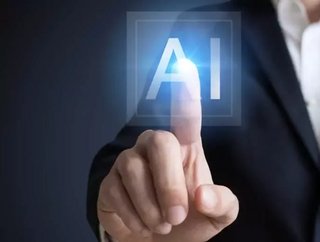Comment: Supply chain in the era of intelligent automation

Every business on the planet strives to increase revenue, enhance profitability and make its customers happy. In the past, organisations mainly focused on achieving customer satisfaction with timely product or service fulfilment. Today, however, most organisations recognise that it’s no longer enough to compete merely on products and services – instead, it’s about managing customer experience and their business outcome as a value add.
We could go as far as to say this is the era of the experience economy. Most organisations make their customers happy by meeting their needs, solving their problems and providing experiences marked by immediacy, vantage and customisation. To my mind, however, what really matters is the outcome of an individual customer’s needs – which will lead to the next wave of evolution and differentiator as the “outcome economy.”
The outcome economy not only addresses customer end needs by selling a promise of outcome, it also senses and creates wish lists that open new sales opportunities for businesses to improve revenues and profitability, delivering a notable return on investment and assets, and achieving a substantial reduction in total cost of ownership (TCO). Companies such as Amazon are already leveraging their artificial intelligence (AI) tools to enable the development of the outcome economy, and we have all seen their growth over the last few years.
Challenges and opportunities
“Amazon-like” has become an industry standard for customer experience, with the convenience of placing orders with one-click checkout, real-time feedback from other buyers and complete visibility on delivery status. For customers, the service not only meets immediate requirements, but also creates a need for something they may not even have been aware of until it was recommended. For Amazon itself, it opens sales avenues and creates a phenomenal growth trajectory. However, achieving customer experience at this level and move towards the outcome economy model requires an entire digital ecosystem in the background to make it happen.
The major challenges that most companies grapple with include:
- Interactions with customers and analysis of data touchpoints
- Sensing the demand and fluctuations well in advance
- Agile and decisive actions from real-time insight that can respond to evolving needs
- Collaboration with partners for speed to market
- Complex processes and technology landscape that result in longer lead times
- Transparency and visibility across the value chain
Approaching digital transformation
To meet today’s these challenges, businesses are embarking on digital transformation across the supply chain. Successful digital transformation, however, relies not solely on implementing new technologies but in transforming the organisation to take advantage of the emerging possibilities that new technologies provide.
Major digital transformation initiatives are centred on re-imagining the customer experience, operational processes and business operating models. The fusion of the physical supply chain and the virtual world into cyber-physical ecosystems will drive transformation across industries and their supply chains – with big data, advanced analytics, robotics and intelligent automation, cognitive artificial intelligence (AI), and the Internet of Things (IoT) are creating additional opportunities along the entire industry value chain.
It’s a case of “adapt or perish” – across industries, digitisation coupled with transformation of the operating model is changing the rules of the game and businesses that fail to react to this will be overtaken by their competition.
Manufacturing companies, for example, are applying advanced analytics to predict the health of their installed bases and reduce downtime with data gathered from IoT sensors. They are also installing robots to carry out shop floor assembly activities to improve efficiency and reduce costs. CPG businesses are implementing algorithm-driven sensing platforms to predict demand well in advance in order to minimize drop orders and optimise inventories. Meanwhile, customer services functions are heavily deploying cognitive and AI applications to enhance critical customer interactions.
Transforming the supply chain through intelligent automation
The pre-digital economy was designed principally for efficiency, but in the digital economy, agility, scalability, responsiveness and transparency are key. Given this, digital supply chain transformation should be built upon four key pillars:
- Connected ecosystem
- Intelligent processes
- Cognitive analytics
- Autonomous fulfilment
Approaching it in this way not only drives optimisation of processes and operations – it opens channels to new innovative business models, which can deliver:
- Agility – redesigning the operating model to make it modular, flexible and boundless to adapt to the evolving market landscape.
- Scalability – the capacity to reinforce speed to market from product inception to commercialisation.
- Responsiveness – the capacity to make quick and informed decisions to respond to the market in real time.
- Transparency – empowering employees, customers and partners to interact seamlessly, extending real-time visibility across the value chain.
Done successfully digitisation breaks down barriers, enabling the supply chain to become a completely integrated ecosystem that is fully transparent to all players involved – from the suppliers of materials and parts to the transporters of those supplies and finished goods, and finally to the customers demanding fulfilment. The digital supply “network” will offer a new degree of resiliency and responsiveness, enabling first-mover companies to beat the competition by providing customers with the most efficient and transparent service delivery.
Deployment with care
Intelligent automation makes possible the creation of an ecosystem for holistic automation to drive value for business. But with so much noise about automation and digitisation, companies tend to deploy technologies randomly, which can generate point benefits but won’t deliver enterprise-wide added value.
With endless tools, technologies and applications available, what matters most is not just selecting the best solution, but finding one that offers the best and most appropriate way of working in the prevailing circumstances, and that will help enable a shift change in an organization’s operating model.
The key is to focus not just on automation technologies, but make them part of a comprehensive and strategic approach to the delivery of services.






